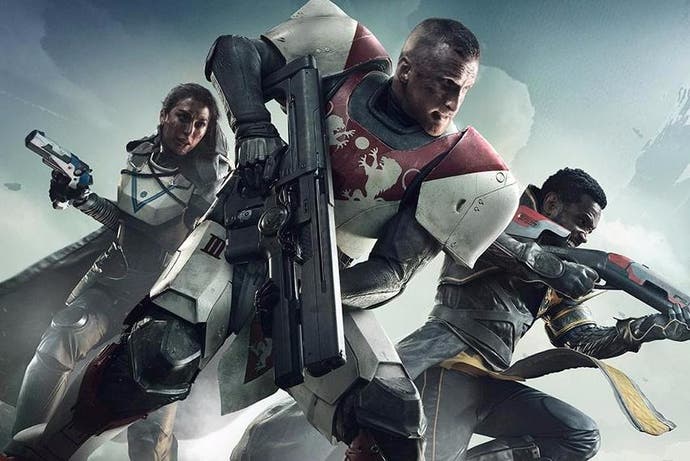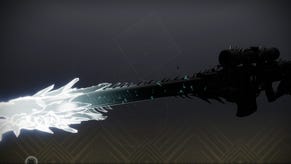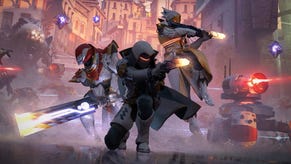Why can't Destiny 2 run at 60fps on PS4 Pro?
4K resolution more viable than doubling frame-rate.
Bungie has confirmed that Destiny 2 will offer full PlayStation 4 Pro support, but some users have voiced concerns that the developer has chosen to target 4K display support instead of 60fps gameplay. The thinking is straightforward enough - ultra HD offers prettier visuals of course, but smoother gameplay offers lower latency and a higher level of precision response. This is exactly why franchise FPS titles like Battlefield and Halo transitioned across to 60 frames per second. So why not Destiny too?
In the wake of the reveal event, Bungie's Luke Smith and Mark Noseworthy sat down with IGN and the topic arose during conversation.
"I mean, I'm going to wade into this, and you [Mark Noseworthy] can flesh it out," Smith said. "The console, the PS4 Pro is super powerful, but it couldn't run our game at 60. Our game's this rich physics simulation where collision of players, networking, etc, and like, it wouldn't run... [there's] not enough horsepower there."
"But there's tons of GPU power in the PS4 Pro. That's why we're doing 4K, right?" Noseworthy chimed in. "It's on the CPU side. Destiny's simulation, like we have more AI, more monsters in an environment with physically simulated vehicles and characters and projectiles, and it's part of the Destiny magic, like that, like 30 seconds of fun, like coming around a corner and throwing a grenade, popping a guy in the head, and then you add like five, six, seven other players in a public event; that is incredibly intensive for hardware."
On the face of it, there's nothing here that we couldn't have guessed already: when you look at the balance of the PS4 Pro and indeed Project Scorpio, both consoles have been specifically designed to run current-gen game engines at higher resolutions and smoother frame-rates. Both Scorpio and PS4 Pro only offer a 31 per cent uplift in CPU power, while GPU sees a 2.3x boost over base hardware with PS4 Pro, rising to a 4.6x uplift on Scorpio vs Xbox One. The core hardware design of both machines is all about scaling up graphics, not the game simulation.
The response to Bungie's explanation hasn't gone down particularly well in some quarters, precisely because so many of the other console shooters out there are seemingly more ambitious. Battlefield 1, for example, rolls out 64-player matches and vast areas in addition to many of the things Noseworthy discusses - physically simulated vehicles and projectiles, for example.
But there are two important distinctions here. First of all, even on PS4 Pro, there are frame-rate drops from the 60fps target - almost certainly down to the CPU's still modest capabilities. And secondly - and more crucially - DICE built its game from the ground-up around a higher frame-rate target - it isn't trying to force a 30Hz engine into a 60Hz envelope with only limited additional resources.
And the thing is, we know exactly what happens when developers do try this on PlayStation 4 Pro. Rise of the Tomb Raider's 1080p performance mode hands in a 40-60fps experience in more challenging stages, while the same game code running on the much less capable base PS4 locks to 30fps. Games that we would imagine to be less intensive on CPU resources - such as Knack, for example - also fail to hand in a locked 1080p at 60 frames per second on PlayStation 4 Pro.
In fact, we can only think of one game where a 30fps base PS4 experience translates into an absolutely solid 60fps lock on PS4 Pro - Deck 13's The Surge. Further evidence of fundamental CPU limitations can be found in Horizon Zero Dawn's performance mode - it runs at 1365p native, but again locks to 30fps. It uses Pro's additional CPU resources to refine the already excellent performance level, to iron out the kinks, as opposed to attempting to double engine throughput.
But with the arrival of a PC version, at least this time there will be a 60 frames per second Destiny experience available. Bungie demonstrated the title running at 4K with 60 frames per second gameplay using a GTX 1080 Ti paired with a Core i7 7700K. Even compared to Intel's very best enthusiast-grade six, eight and ten core CPUs, the quad-core 7700K is still an exceptionally powerful performer and a vast leap in processing power over the eight AMD Jaguar-derived cores found in the current-gen consoles and their mid-gen refreshes. Something comparable will eventually come to console hardware when AMD's Ryzen architecture makes the leap to the next generation, but this is years away.
In the meantime, returning to Destiny 2, further arguments against Bungie's decision have centred on The Crucible - the eight-player PvP mode of the game offers smaller maps, no vehicles and no CPU AI characters (based on what was revealed so far at least), potentially reducing the burden on the current-gen consoles' processing resources. Why not run this mode at 60fps?
Without intimate knowledge of Bungie's engine, it's difficult to say, but one thing is certain - it would probably cause more problems than it is worth. For a start, operating at 60fps on Pro while base hardware remains at 30fps would give Pro players a big, big advantage. The only way to maintain parity between players would be individual servers for base and Pro owners.
Based on basic logistics, carving up a console audience in this way, or bestowing one set of players with a huge advantage is highly unlikely to happen - something Microsoft's Shannon Loftis pointed out, saying that although developers have the choice, "as a developer I would bet no-one chooses different frame-rates for MP games ever."
As things stand, Destiny 2 is a game built on an engine designed for 30Hz gameplay on consoles. Limiting frame-rate on more capable mid-gen hardware refreshes ensures more parity in the experience, and almost all of the evidence we have for unlocking frame-rate on PS4 Pro results in a more uneven experience that rarely hits a locked 60 frames per second. CPU is indeed the primary limiting factor and we strongly suspect that the same situation will be in place for a prospective Project Scorpio version too.
We'll report back on potential Destiny 2 enhancements there and comparisons with the PS4 Pro game as and when information or media becomes available, but one thing that is important to note is that Bungie hasn't actually confirmed the form that the title's 4K support will take. Native 4K? An arbitrary resolution upscaled to 4K? Checkerboarding? And by extension, will the additional horsepower offered by Scorpio result in any further improvements? Bungie didn't comment at all on the Scorpio implemention during last week's reveal, but more may become clear at next month's E3.

















